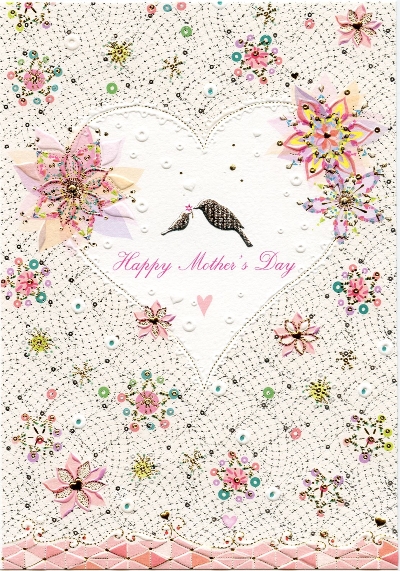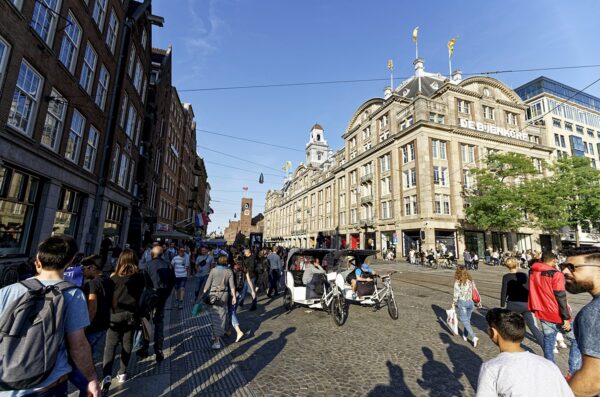 Alan Monahan writes: I wonder how many of our retailers have enjoyed strong Mother’s Day sales.
Alan Monahan writes: I wonder how many of our retailers have enjoyed strong Mother’s Day sales.
I was interested to see that despite the growing scale of the opportunity more than half of shoppers surveyed by marketing firm Savvy said that Mother’s Day products in shops were “boring and lacked inspiration”.
Retail expenditure is continuing to migrate online and the research shows that some 45% of shoppers planned to buy Mother’s Day presents via the web this year – an increase of 7% on 2016. So, the onus is firmly on store-based retailers to give shoppers good reasons to visit bricks-and-mortar stores and to spend.
Savvy’s questioning of shopping decision makers indicated that 66% of those interviewed were looking to celebrate Mother’s Day this year, with almost a third aiming to buy a personalised gift.
It may not surprise you that women remain more engaged with the event than men – 72% compared with 57% respectively – and that mothers would like, but don’t necessarily receive, handmade, more sentimental gifts and cards.
But what do shoppers want from retailers? Topping the wish list at 38% was ideas for presents. And more than a third of those interviewed wanted a good range of gifts to buy to suit different budgets, while a dedicated aisle for the event appealed to 29% of shoppers.
The Halifax said that spending with our credit and debit cards on the Mother’s Day event was expected to hit a record £79 million over the weekend – that’s up from £75.6 million in 2016, and an increase of 18% since 2014.
This generosity towards our mums comes at a time when UK families are reported to be more pessimistic about their finances than at any time in the past three years.
Rising inflation, weak wage growth and the collapse of the pound have taken their toll on confidence, according to a new survey from economic consultancy IHS Markit, which expects stretched household finances to become a greater drag on consumer spending as we move forward.
Meanwhile, retail sales in the three months to February recorded their biggest drop in nearly seven years, with higher fuel prices eroding shoppers’ disposable income, according to the Office for National Statistics.
That said, Reuters reported that sales volumes in February alone beat all economists’ expectations in its poll, jumping by 1.4% from January.
The British Retail Consortium thinks that the figures are likely to be interpreted as a sign that consumer spending remains relatively unruffled by suggestions that prices rises and squeezed real incomes should make shoppers more cautious.
But it warns: “Some care needs to be taken. As in late 2016, small businesses were a key driver of the pick-up in February, returning to double digit growth, with the star performers being small online businesses growing at over 50%!
“However, the sample used for small businesses, by our estimates, represents just 1% of the small businesses in the UK, although they have a weight of around 20% in the index. Given the small sample size and the fact that it changes on a rolling basis, as you would expect there is considerable volatility in these figures.”
As a demonstration of underlying aggregate consumer spending, the BRC believes the figures should be regarded with care and suggests that Easter, which falls in April this year, “will be the real test of whether the expected slowdown in consumer spending has arrived”.
“Being later should work in retailers’ favour, but we’ll have to wait and see,” it says.
The BRC’s own footfall figures show that visits to retail destinations fell by 1% in February, which marks little change to what has been a familiar story of the past few years.
Chief executive Helen Dickinson observes that there has been a steeper drop than normal in retail parks, with footfall to this shopping destination falling at the fastest rate since November 2013. In comparison, footfall on the high street grew marginally.
She comments: “The modest relief fund for business rates announced in the Budget will hopefully go some way to helping those shops hardest hit, albeit only temporarily,” she says. “It won’t however ease the burden for the majority of retailers who will continue to pay nearly a half of rental values in property tax.
“A business tax system that continues to curtail investment in bricks and mortar is at odds with an industry that desperately wants to invest in order to maintain local jobs and build more experience and engagement with shoppers to attract them into their stores.”
Greeting card pictured top by Turnowsky
















